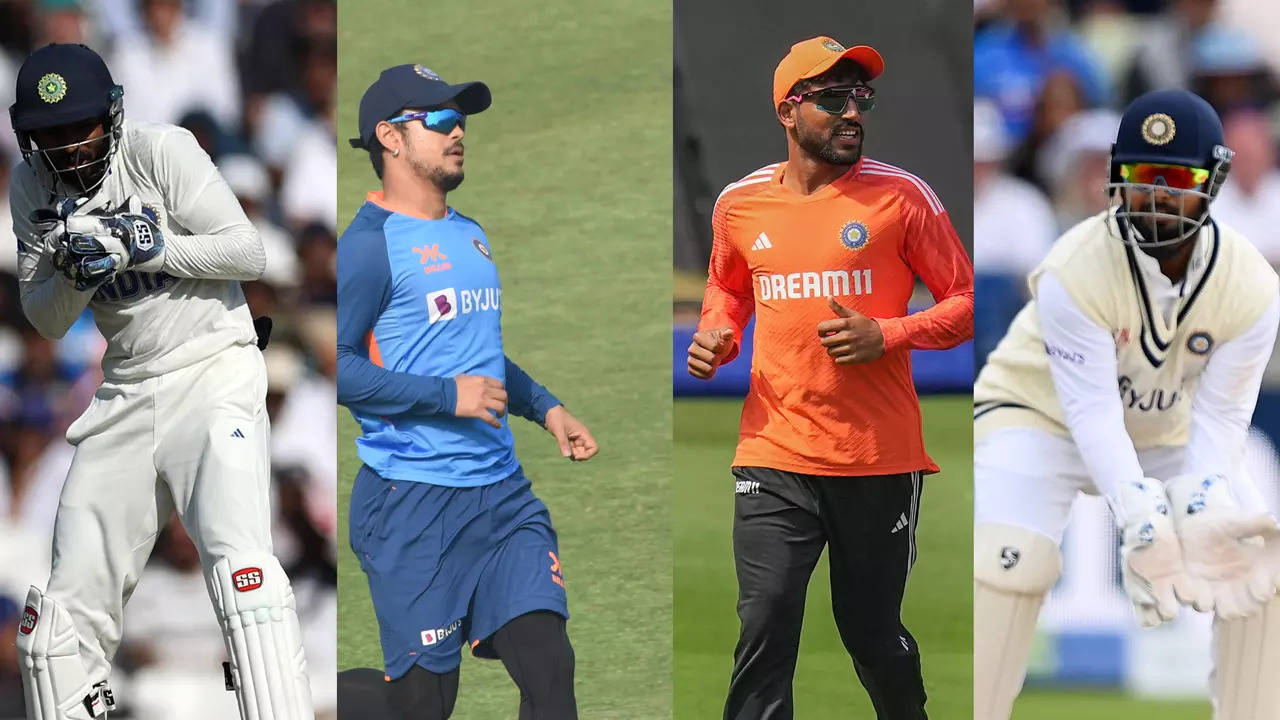[ad_1]
of the main alternatives.However, within 24 months, and just days before the third Test against England begins in Rajkot, Dravid and the selectors may well be revisiting the call.
Bharat’s wicketkeeping has been by and large satisfying but his meagre returns with the bat have been a worry in a closely-contested series. With Rishabh Pant still recovering from his accident, what are the options?A few years earlier, MS Dhoni’s undisputed place behind the stumps virtually wiped out the evolution of a generation of wicketkeepers. This time, a similar thing seems to be happening, but only in the Test format.
With Ishan Kishan on an indefinite sabbatical from international cricket, resources and options behind the stumps seem thin. Bharat has always been touted as one of the best wicketkeepers after Saha.
Dravid, when he was head of the National Cricket Academy (NCA), worked on Bharat’s development in the India ‘A’ programme since 2017, in tandem with the national selection committee then led by MSK Prasad. Yet, there have been struggles transforming Bharat’s potential to performance.
Now, the toughest question facing Dravid and captain Rohit Sharma is whether they want to persist with Bharat in the playing XI for the remainder of the series.
His batting average in seven Test matches, six of which have been played in India, has been 20. While his wicketkeeping has largely looked technically sound, the odd blemish here and there amplifies the pressure on Bharat.
With an average of 36, batting has never been his primary strength even in his 10-year-long first-class career. Maybe that is why the team management has even pushed him down to No. 8.
The only other option is Dhruv Jurel, who has experience of a mere 15 first-class matches and no real reputation to go by. For that matter, even Ishan Kishan’s first-class average of 39 over 50 games isn’t close to what Pant had before making his Test debut.
Has Indian cricket failed to anticipate this looming scarcity in wicketkeeping options in red-ball cricket?
“India should go in with Bharat for the next Test since they have invested in him so much, for so many years. But this situation was building up,” former India wicketkeeper and commentator Deep Dasgupta said. “That said, Bharat has to work on his technique while ‘keeping up to the stumps to fast bouncing balls and curb planting his front foot forward while batting. That’s where he is getting into trouble.”
Withering India ‘A’ and U-19 red-ball programmes?
Former India selector Devang Gandhi, who worked closely with Dravid, points out that the ‘A’ programme had a significant impact on creating a bench strength that resulted in the famous Test series win in Australia in 2020-21. Dravid had also ensured that U-19 India teams played youth ‘Tests’ besides white-ball cricket.
“Dravid had planned out ‘A’ tours between the IPL and the onset of the domestic season. That’s how we could groom Bharat after Pant. We had figured out wicketkeepers.
While Ishan played a lot of whiteball ‘A’ cricket, he was also made to play red-ball matches. Sanju Samson was primarily a white-ball option,” Gandhi told TOI.
“Reviving the ‘A’ tours is a must. But the selectors and BCCI must not bank on the white-ball pool. Red-ball cricket needs undivided attention. There was Upendra Yadav last year but he seems to have faded away due to lack of ‘A’ cricket,” Dasgupta pointed out.
‘IPL stars shirking wicketkeeping duties in first-class cricket’
The other worrying trend has been that when players graduate to the higher level and become prominent players in the Indian Premier League (IPL), they opt out of wicketkeeping duties in domestic cricket. While Ishan continues to ignore domestic cricket altogether, Samson has barely kept wickets for Kerala in the last five years.
Gandhi suggests that such players’ BCCI central contracts need to be revisited.
“This was becoming a pricky topic during our tenure. When capped international players do not play in domestic cricket, they should be penalised in the next cycle of contracts. Only this way can the board push senior players to play domestic cricket,” Gandhi said.
Dasgupta, who had been part of the erstwhile Pune Warriors franchise, brought up implementation of an interesting clause that was added to IPL contracts.
“To play IPL, players had to obtain an NoC from state associations if they didn’t play at least 60% matches in the domestic season. This has to be enforced strongly again by BCCI. Besides, BCCI has to raise the pay in first-class cricket so that an average player can make at least Rs 30-40 lakh to match basic IPL salaries,” Dasgupta said.
While the Indian Test team may be compelled to make do with stop-gap arrangements until Pant comes back from injury, BCCI may have to hit the reset button with its development programme.
[ad_2]
Source link


